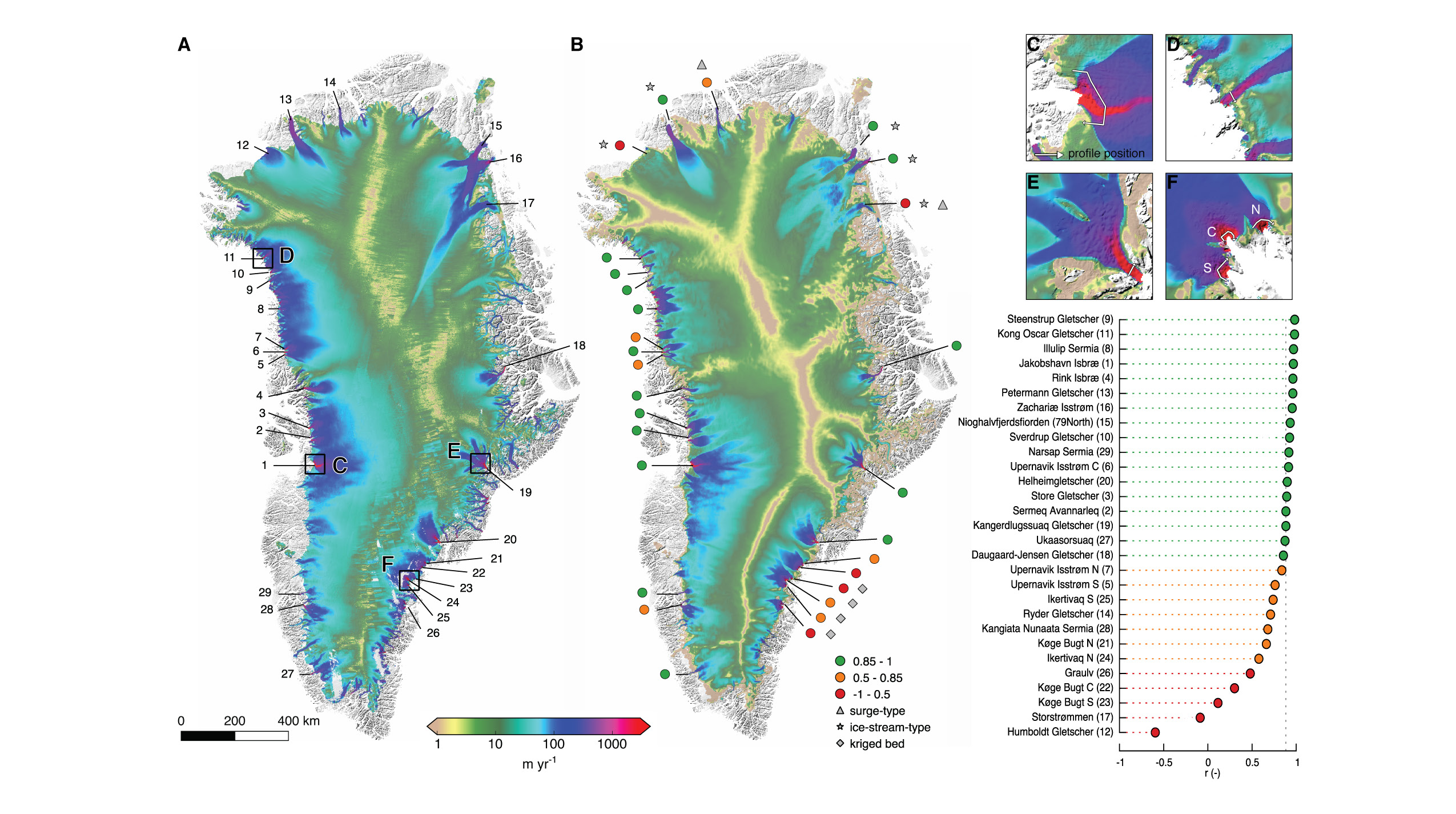Greenland model could help estimate sea level rise
February 1, 2016
Sue Mitchell
907-474-5823
University of Alaska Fairbanks mathematicians and glaciologists have taken a first
step toward understanding how glacier ice flowing off Greenland affects sea levels.

Andy Aschwanden, Martin Truffer and Mark Fahnestock used mathematical computer models and field tests to reproduce the flow of 29 inlet glaciers fed by the Greenland ice sheet. They compared their data with data from NASA’s Operation IceBridge North aerial campaign.
The comparisons showed that the computer models accurately depicted current flow conditions in topographically complex Greenland.
The work by the three researchers, all with UAF’s Geophysical Institute, is featured in the latest edition of Nature Communications.
The time was right for the comparison, said Truffer, a physicist in the Geophysical Institute's Glaciers Group.
“Better computer models and NASA’s high resolution data set made the difference,” he said. “Each part needed each other to make sense. It couldn’t have happened without either.”
The work has taken over a decade, hindered by the ability to understand the thickness of Greenland ice. The NASA campaign provided that information, using an advanced ice-penetrating radar developed by the University of Kansas Center.

The three now want to see if the model can accurately predict how sea levels might be affected by a melting Greenland ice sheet.
ADDITIONAL CONTACT: Andy Aschwanden, 907-474-7199, aaschwanden@alaska.edu; Martin Truffer, 907-474-5359, truffer@gi.alaska.edu; Mark Fahnestock 907-687-6371, fahnestock@gi.alaska.edu
ON THE WEB: Geophysical Institute: gi.alaska.edu. Nature: http://bit.ly/1nZthvb



